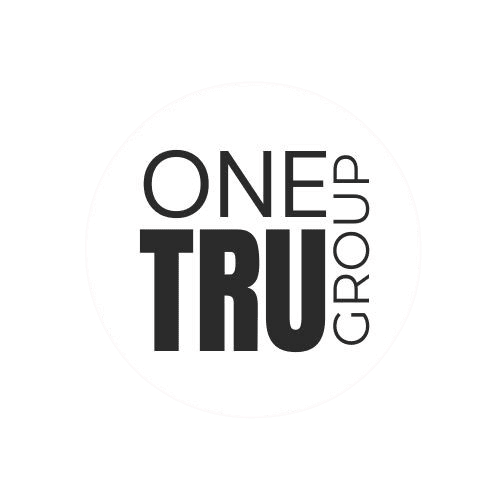Understanding CAD Outsourcing
CAD outsourcing refers to the practice of delegating Computer-Aided Design (CAD) tasks to external service providers. This strategic move allows businesses to leverage specialized skills and technologies that are not readily available in-house. The tasks that can be outsourced encompass a wide array of CAD-related needs, including drafting, modeling, rendering, and analysis. By outsourcing these services, companies can achieve greater efficiency and focus on core competencies without the burden of managing all design processes internally.
Among the types of services that are frequently outsourced, CAD drafting is particularly prominent. It involves the creation of detailed technical drawings and plans that are essential for various engineering and architectural projects. CAD modeling, on the other hand, encompasses the development of 3D representations of products or structures, providing a realistic visualization essential for project development. Rendering is another critical service that enhances visual presentations, showcasing the project’s aesthetic appeal. Analysis services, including structural or thermal analysis, further optimize designs by ensuring they meet predetermined specifications and requirements.
Industries that typically gain the most benefits from CAD outsourcing include architecture, engineering, product design, and manufacturing, among others. In the architectural sector, for instance, architectural firms often outsource CAD drafting and modeling to reduce turnaround times and enhance project quality. Similarly, manufacturers may seek external CAD services to streamline product development cycles. Thus, outsourcing CAD-related needs not only helps in managing costs but also can lead to improved innovation and market responsiveness. By recognizing the advantages of this approach, companies position themselves to better meet the demands of their respective industries.
Cost Efficiency and Resource Management
Outsourcing CAD-related needs presents a compelling opportunity for organizations aiming to enhance cost efficiency and optimize resource management. When companies choose to outsource, they often experience significant reductions in expenses associated with hiring full-time staff. The costs linked to salaries, benefits, and training for in-house CAD professionals can be substantial. By engaging specialized external providers for CAD services, businesses can convert fixed labor costs into variable expenses, allowing for better budget management and financial flexibility.
Moreover, outsourcing eliminates the need for companies to invest heavily in maintaining costly software and hardware infrastructure. CAD applications can often entail significant licensing fees, maintenance costs, and necessary upgrades. By outsourcing these specialized services, companies can benefit from the latest technology and expertise without the burden of these expenditures. The external service providers frequently operate on a subscription-based or project-based pricing model, which further enhances the overall cost-effectiveness.
The strategic allocation of resources is another crucial advantage of outsourcing. When CAD functions are handled by external experts, in-house teams are freed from these time-consuming tasks and can redirect their efforts towards core business operations and critical growth initiatives. This shift enables organizations to enhance productivity and innovation, leveraging their internal talent where it is most impactful. Consequently, the decision to outsource not only reduces financial strain but also empowers teams to engage in strategic planning and business development.
In this way, outsourcing CAD-related tasks leads to substantial financial savings and effective resource management. Companies can achieve more with less, ensuring that they remain competitive while simultaneously focusing on what truly matters: achieving their core business objectives and fostering growth.
Access to Expertise and Advanced Technology
Outsourcing CAD-related needs offers businesses the opportunity to tap into a vast pool of specialized talent that may not be available within their in-house teams. This access to expertise is one of the primary advantages and benefits of outsourcing. By collaborating with external CAD professionals, companies can engage individuals who possess advanced training and a wealth of experience in the field. These specialists often have up-to-date knowledge of the latest design principles and industry standards, ensuring that projects are handled with a high level of proficiency and technical skill.
Furthermore, outsourcing partners frequently invest in cutting-edge technology and software resources that can enhance project outcomes. Many internal teams may be constrained by budget considerations or the challenges of keeping up with rapid technological advancements. However, outsourced firms typically prioritize the acquisition of the latest tools and applications designed for CAD processes, allowing them to deliver superior services. This access to advanced technologies not only accelerates project timelines but also fosters innovation, paving the way for unique design solutions that might otherwise be unattainable with limited resources.
Utilizing external expertise not only leads to improved design quality but also allows in-house teams to focus on their core competencies. By offloading specialized tasks to skilled professionals, organizations can divert their attention to strategic initiatives that drive growth and efficiency. This strategic delegation of CAD-related work can ultimately enhance overall productivity while ensuring that the quality of the deliverables meets industry standards.
In conclusion, outsourcing CAD-related needs provides businesses with significant access to expertise and advanced technology, delivering remarkable advantages and benefits that can drive project success and foster innovation. By leveraging external resources, companies can enhance their capabilities and create a competitive edge in the marketplace.
Scalability and Flexibility in Projects
One of the primary advantages of outsourcing CAD-related needs is the scalability it offers to businesses. In an ever-changing market, companies often face fluctuating project demands which require adaptability. By partnering with external CAD service providers, organizations can efficiently scale their operations up or down based on current requirements. For instance, a firm may need to ramp up its design capabilities during peak project seasons or reduce resources during quieter periods without incurring the overhead of maintaining a larger in-house team.
The flexibility provided through outsourcing is not only beneficial for managing resources but also allows companies to quickly adjust to sudden market shifts. When a new opportunity arises or a client requests a tight turnaround, having access to a broader pool of CAD professionals enables businesses to meet these challenges head-on. External teams can be onboarded swiftly, ensuring that projects stay on track and deadlines are met without compromising quality.
Additionally, using outsourced CAD solutions facilitates a more efficient workflow. Companies can assign specific components of the project to external specialists with expertise in particular areas, therefore enhancing the overall effectiveness of the project team. This specialization can lead to faster completion times and potentially higher quality outputs. Furthermore, outsourcing arrangements can be tailored to fit the unique needs of each project, providing businesses with the necessary labor margin and technological support to remain competitive.
In conclusion, embracing outsourcing for CAD-related needs not only boosts scalability and flexibility but also empowers businesses to respond effectively to project demands and market dynamics. By collaborating with external resources, companies can enhance their operational capabilities, ensuring they remain agile and responsive in a rapidly evolving industry.




